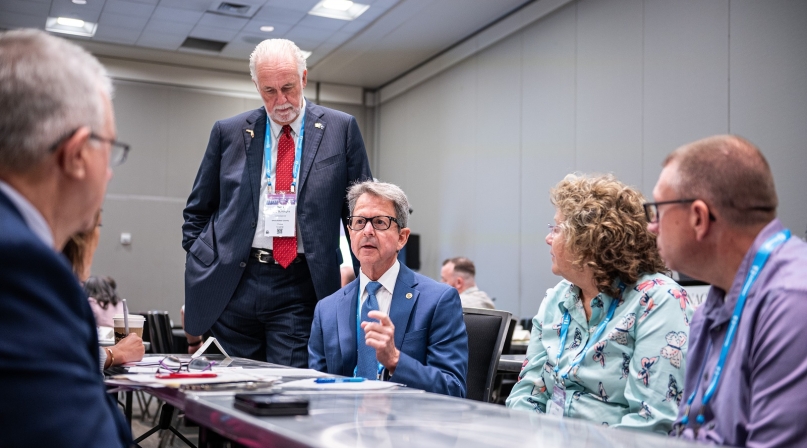Counties must speak up with their broadband needs

Key Takeaways
When it comes to connecting residents to broadband, counties need to speak up with detailed information about their unserved and underserved areas and work closely with their state broadband directors to get their fair share of federal dollars, telecom experts said.
“Get involved — go to your state broadband director – get to know them,” said Luis Acuña, Southwest regional director for the National Telecommunications and Information Administration. “They can weave your needs into their plan. Share information with them.”
Telecommunications & Technology Policy Steering Committee
July 21, 2023
NACo Annual Conference - Travis County, Texas
Another mantra also emerged during the meeting: When Stearns County, Minn. Commissioner Tarryl Clark, who chairs the committee, asked members to introduce themselves and describe their own broadband situation in their counties, almost every member said the words: “We need more fiber.”
One way to get that is to find out about several federal programs out there designed to help counties bridge the digital divide. The one with the most dollars, $42.45 billion, is the Commerce Department’s Broadband, Equity, Access and Deployment (BEAD) program. On June 30, the NTIA released information on the amount each state will receive from the program. You can see each state’s allocation here.
But before the dollars are invested, each state is required to file a draft plan with the NTIA. Some of those draft plans can be seen on the NTIA website here.
Other federal programs include the Digital Equity Act, funded at $2.75 billion; the Tribal Broadband Connectivity Program, funded at $2 billion and the Middle Mile Program, funded at $1 billion.
Members of the NACo committee also heard about broadband solutions from their fellow county officials. Waseca County, Minn. Commissioner DeAnne Malterer described the success her county had due to a partnership with the American Connection Corp.
The group partially funded a fellowship position, staffed by an expert who helped the county secure an Internet provider. Using American Rescue Plan funds, the county was able to connect unserved residents to high-speed Internet. “It was invaluable to Waseca County,” Malterer said.
In Arkansas, after Glen Howie was named the state broadband director last summer, he toured all 75 counties in the Natural State.
“He left homework with all of the county judges and asked them to create countywide committees that included residents,” Palm Beach County, Fla. Mayor Greg Weiss.
“By establishing a committee, it puts a county in a much stronger position,” he noted, when it comes time to submit any challenges as plans are hammered out to allocate BEAD program dollars.
Attachments
Related News

Congress Considers Bills to Reauthorize State and Local Cybersecurity Grant Program
Congress is considering two bills to reauthorize the State and Local Cybersecurity Program

County Countdown – Dec. 1, 2025
Every other week, NACo's County Countdown reviews top federal policy advocacy items with an eye towards counties and the intergovernmental partnership.

Unlocking AI Starts With Strong Data Governance
Strong data governance is the foundation of trustworthy AI in government. When Agencies inventory, clean, unify and steward their data, they unlock better decisions, improved services and stronger public trust.
